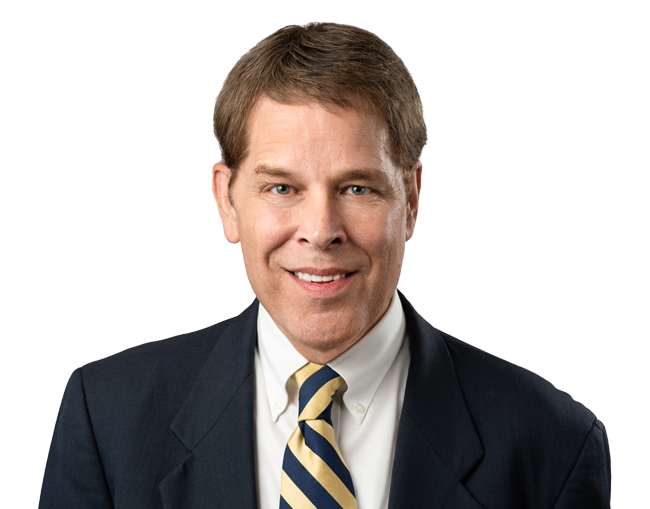

William W. Merten
Partner
Office: Chicago
wmerten@kdlegal.com
p: 312-235-1115
f: 312-423-9303
Bill Merten is a Partner at Krieg DeVault in the Employee Benefits and Employee Stock Ownership Plans (ESOPs) Practices. Mr. Merten focuses his practice on business succession planning and executive compensation. He has been recognized by leading publications such as Martindale-Hubbell, American Lawyer Media, Super Lawyers, The Legal 500, and Leading Lawyers Network, and he has been inducted into the American College of Employee Benefits Counsel (ACEBC).
Mr. Merten advises corporations, shareholders, directors, and various professionals regarding the use of ESOPs and ESOP related strategies in a wide variety of transactions including, management buyouts, ownership succession transactions, private equity transactions, going-private transactions, ESOP company sales, and mergers and acquisitions.
Mr. Merten speaks frequently for various organizations on succession planning alternatives and related tax-planning techniques, and has also authored and co-authored chapters and articles pertaining to various ESOP-related topics. He previously served as an executive compensation professor for DePaul University's Masters of Law in Taxation program and a qualified plan professor for DePaul's Masters of Science in Taxation program.
Professional Associations
- Member, Finance Committee of the ESOP Association
Awards & Recognitions
- The Best Lawyers in America®, 2026
- Employee Benefits (ERISA) Law
- Leading Lawyers in Illinois (Employee Benefits Law): Most Often Reccommended (2023)
- Named a Fellow to the American College of Employee Benefits Counsel (2021)
- The Legal 500 U.S (2021 ), "Key Lawyer"
- Rated AV Preeminent by Martindale-Hubbell® for the past 15 years, the highest rating in legal ability and ethical standards
- Top rated Midwest lawyer by America Lawyer Media (2010-2018)
- Top attorney in Illinois by Chicago Magazine Super Lawyer for the past eight years
- Super Lawyers Business Edition (2013-2018)
- The Legal 500 (2013, 2019, 2020)
- Leading Lawyers Network
Seminars & Presentations
- Presenter, "Beyond the Basics: The Beauty of ESOPs," Krieg DeVault Podcast Series, January 8, 2025
Publications
- "Selling to an ESOP and Financing the Deal", The National Center for Employee Ownership (2023)
Education
- J.D., Wayne State University, 1980
- LLM, New York University, 1981
- B.A., Michigan State University, 1977
Bar & Court Admissions
- Illinois, 1985
Practices
Industries
Bill Merten is a Partner at Krieg DeVault in the Employee Benefits and Employee Stock Ownership Plans (ESOPs) Practices. Mr. Merten focuses his practice on business succession planning and executive compensation. He has been recognized by leading publications such as Martindale-Hubbell, American Lawyer Media, Super Lawyers, The Legal 500, and Leading Lawyers Network, and he has been inducted into the American College of Employee Benefits Counsel (ACEBC).
Mr. Merten advises corporations, shareholders, directors, and various professionals regarding the use of ESOPs and ESOP related strategies in a wide variety of transactions including, management buyouts, ownership succession transactions, private equity transactions, going-private transactions, ESOP company sales, and mergers and acquisitions.
Mr. Merten speaks frequently for various organizations on succession planning alternatives and related tax-planning techniques, and has also authored and co-authored chapters and articles pertaining to various ESOP-related topics. He previously served as an executive compensation professor for DePaul University's Masters of Law in Taxation program and a qualified plan professor for DePaul's Masters of Science in Taxation program.
Professional Associations
- Member, Finance Committee of the ESOP Association
Awards & Recognitions
- The Best Lawyers in America®, 2026
- Employee Benefits (ERISA) Law
- Leading Lawyers in Illinois (Employee Benefits Law): Most Often Reccommended (2023)
- Named a Fellow to the American College of Employee Benefits Counsel (2021)
- The Legal 500 U.S (2021 ), "Key Lawyer"
- Rated AV Preeminent by Martindale-Hubbell® for the past 15 years, the highest rating in legal ability and ethical standards
- Top rated Midwest lawyer by America Lawyer Media (2010-2018)
- Top attorney in Illinois by Chicago Magazine Super Lawyer for the past eight years
- Super Lawyers Business Edition (2013-2018)
- The Legal 500 (2013, 2019, 2020)
- Leading Lawyers Network
Seminars & Presentations
- Presenter, "Beyond the Basics: The Beauty of ESOPs," Krieg DeVault Podcast Series, January 8, 2025
Publications
- "Selling to an ESOP and Financing the Deal", The National Center for Employee Ownership (2023)
Education
- J.D., Wayne State University, 1980
- LLM, New York University, 1981
- B.A., Michigan State University, 1977
Bar & Court Admissions
- Illinois, 1985

